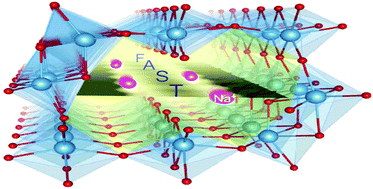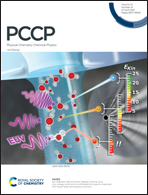First-principles study of the structural and electrochemical properties of NaxTi2O4 (0 ≤ x ≤ 1) with tunnel structure for anode applications in alkali-ion batteries†
Abstract
Due to their low cost and easy synthesis method, several kinds of sodium titanates have been explored as anode materials for sodium ion batteries (SIBs). However, some of them have not yet been considered as electrode materials for SIBs, and here we have carried out a first-principles study on NaxTi2O4 compounds with two different tunnel structures, denoted as single and double phases, to demonstrate their structural and electrochemical properties upon Na or Li insertion. Our calculation results reveal that these compounds exhibit structural stability during sodiation/desodiation and a moderate electrode voltage of ∼0.82 V vs. Na+/Na with a specific capacity of ∼150 mA h g−1. In particular, the activation energy of Na+ ion migration in the double phase is estimated to be as low as 0.28 eV, which is the lowest value among the SIB electrodes developed so far, and this can be attributed to the wide tunnel structure. In addition, we verify their potentiality for use as anode materials in lithium ion batteries (LIBs) by exploring their properties upon Li insertion. Since these compounds are predicted to be promising anode materials for SIBs or LIBs by our calculations, we believe that our findings will promote further experimental studies.



 Please wait while we load your content...
Please wait while we load your content...